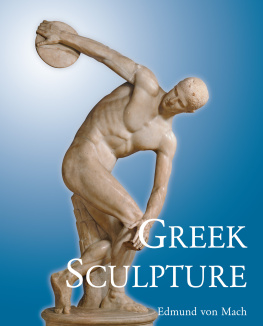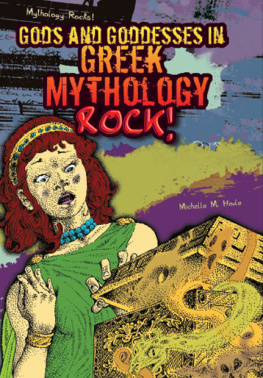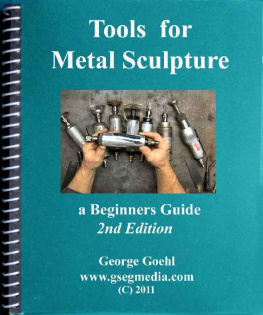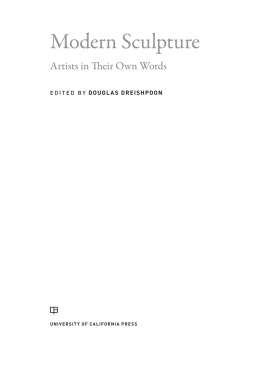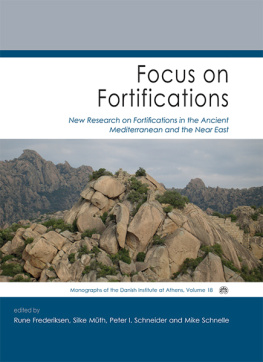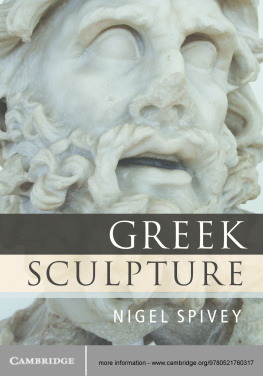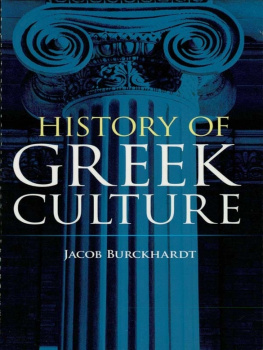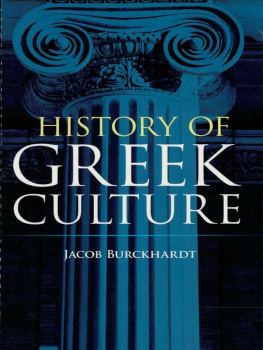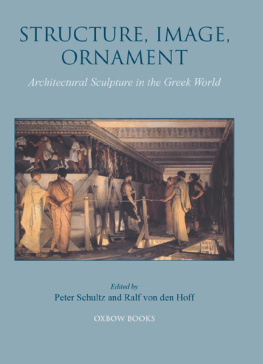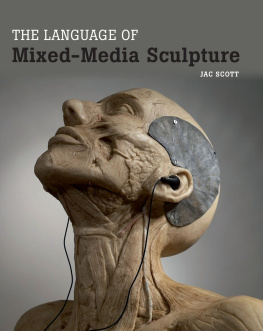Author: Edmund von Mach
Layout: Baseline Co. Ltd.
61A-63A Vo Van Tan Street
Nam Minh Long, 4 th floor
District 3, Ho Chi Minh-City
Vietnam
Confidential Concepts, worldwide, USA
Parkstone Press International, New York, USA
. Courtesy of Pr. Kristian Jeppesen
Image-Bar www.image-bar.com
All rights reserved
No part of this publication may be reproduced or adapted without the permission of the copyright holder, throughout the world. Unless otherwise specified, copyrights on the works reproduced lies with the respective photographers. Despite intensive research, it has not always been possible to establish copyright ownership. Where this is the case, we would appreciate notification.
ISBN: 978-178310-752-0
Edmund von Mach
Greek Sculpture
ITS SPIRIT AND ITS PRINCIPLES

Contents
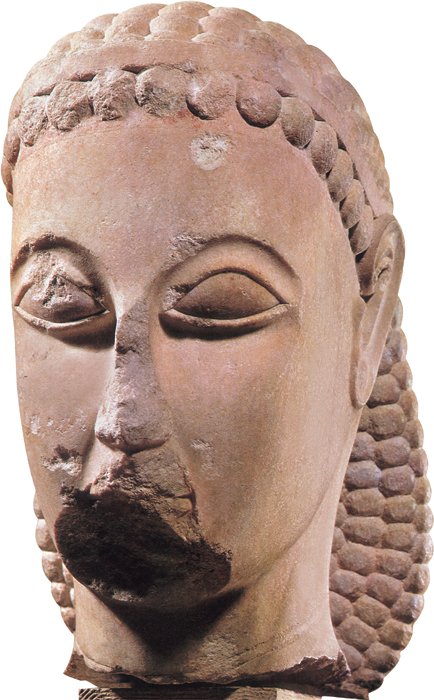
Dipylon Head, Dipylon,
Athens, c. 600 B.C. Marble, h: 44 cm .
National Archaeological Museum, Athens.
Introduction
The study of Greek sculpture was unknown two hundred and fifty years ago. Winckelmann was the first to study it, and to publish a book on the subject in 1755. The excavations in Pompeii and Herculaneum, the removal of the Parthenon sculptures to London by Lord Elgin, and above all, the regeneration of Greece and the subsequent rich finds in her soil, added zest to the continually growing interest in this new study.
In the eighteenth century people were unable to properly judge ancient art because they possessed few originals and were obliged to look through the spectacles of a later Roman civilisation. Animated by a scientific spirit, people of the nineteenth century probed deeper. The spade of the excavator brought long-forgotten treasures to light; scholars trained in the severe school of philology arranged and classified the material, and little or nothing was left to the art critic. The subject, on the whole, was in the hands of the scientific archaeologists, who presented it in more or less exhaustive histories of Greek sculpture or Greek art. All their books follow the historic development. They are histories of ancient artists.
Such a treatment of the subject, although bringing order out of the preceding centurys chaos, made a clear understanding of the spirit of Greek sculpture impossible; for it overburdened the books with such facts as are interesting only to the specialist for use in further discoveries, and cannot legitimately appeal to the artistic public. The archaeological discussions, therefore, largely account for the present neglect of ancient art on the part of artists and intelligent laymen. The eighteenth-century writers generalised without sufficient facts at their disposal; the nineteenth-century scholars collected the facts, and it therefore becomes our duty today to present the lessons which can be learned from them and to introduce the reader to the spirit and the principles of Greek sculpture.
The spirit of Greek sculpture is synonymous with the spirit of sculpture. It is simple, and therefore defies definition. We may feel it, but we cannot express it. The reason it has lost its power today is that we have listened to what has been said about it instead of coming into contact with it. No amount of book knowledge makes up for the lack of familiarity with original pieces of sculpture. Open your eyes, study the statues, look, think, and look again, is the precept to all who would learn to know Greek sculpture. Some introductory assistance and guidance, to be sure, should be accepted; they clear ones mind of prevailing misconceptions. Suggestions in this direction, however, often do more than exhaustive discussions, for they stimulate individual, thought.
Rapidity of Growth
Greek sculpture was of remarkably rapid growth, developing under conditions, generally believed, to be unfavourable. Few countries ever underwent such rapid changes as Greece, for the suddenness with which the Mycenaean civilisation was swept away, perhaps by the Dorians, is unequalled in history. The three or four centuries following upon the Dorian invasion (about 1000 B.C.) the dark middle ages of Greece were full of violent political upheavals; and the whole of the historic period of Greece was characterised by unsettled conditions. States rose and fell with startling rapidity. Athens was an insignificant community before the time of Peisistratos, and is hardly mentioned in the Homeric poems (about 800 B.C.). Her ascendency dates from the Persian wars (490-480 B.C.), but before the century closed, her glory had faded. Alexander the Great came to the throne in 336 B.C.; he carried his standards to India, and when he died Macedonia was no longer destined to be a world power. Pergamon came into prominence in 241 B.C. under Attalos I, and disappeared as a major power in 133 B.C. America is thought of as a new country, but is almost as old as Greece was when absorbed by Rome; and more years have elapsed since the American Declaration of Independence than intervened between the rise and fall of Athens.
The Triumph of the Few
Peace and leisure are commonly believed to be the prerequisites for a period of great art. They surely are, but should not be understood to refer only to external conditions. Revealing is not the peoples surroundings but their state of mind; nor is it necessary that all share the blessing of a noble character. The fervour of the few has often achieved the triumphs of a nation. It is a mistake to credit all the Athenians, or even the majority of them, with an artists love of the beautiful. The petty, unjust middle-class man, as he appears in Aristophaness comedies and in Platos dialogues, with his narrow horizon and jealous prejudices, does not explain the sudden rise of Athens, though he may, and probably does, account for her rapid fall. It was in spite of him and his fellows that Athens gained her superiority.
In the field of art, therefore, the importance of the individual artists cannot be overestimated. Sir Robert Ball is on record as saying that scientific discoveries follow the law of necessity, though they may be hastened by the presence of big men. If Watt had not discovered the power of steam, some one else would have, and several men were ready to announce to the world Darwins theory of the survival of the fittest. But, Sir Robert added, what would the world of music be, if Beethoven had not lived? What is true of music is true also of sculpture, or of any of the thought-expressing fine arts. Some of the noblest Greek statues would never have been created if Phidias had not lived. Dost thou not know, exclaims an ancient writer, that there is a Praxitelean head in every stone? But, it may be added, it takes a Praxiteles to bring it out. Only after the confusing mass of encasing rock has been hewn away does the head reveal its meaning. Most of us, to understand a thought, need its expression. The reality of the thought, however, cannot be denied even when no expression has been vouchsafed it, for it is independent of our conception of it.
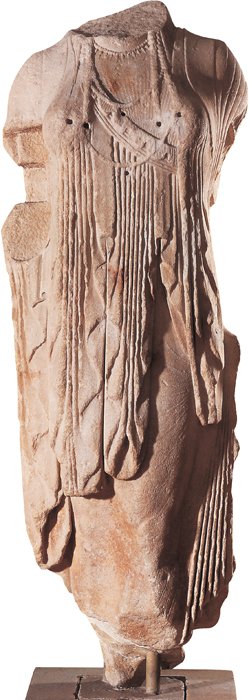
Kore, Delos, c. 525-500 B.C. Marble, h: 134 cm.
National Archaeological Museum, Athens.
Small Range of Simple Ideas
The realm of thoughts expressed in Greek sculpture was circumscribed and far removed from the complexity of modern times. A few simple ideas well expressed form the charm of Greek art. Adequacy of expression, indeed, has at times been considered an essential part of Greek art; and many have spoken of Shelley, Keats, Hlderlin, and others, as Greek, not because these men thought as the ancients did but because they knew how to express their feelings adequately. They were Greek, however, only in part, for they lacked the second quality of ancient art simplicity. True simplicity with human beings is rarely spontaneous. The beauty of the Parthenon is the result of much clear thinking and right feeling. It was, therefore, understood by all, and became in the very year of its completion, as Plutarch says, a classic.
Next page
